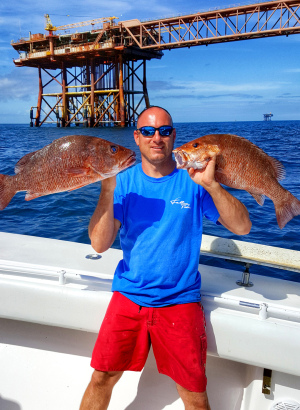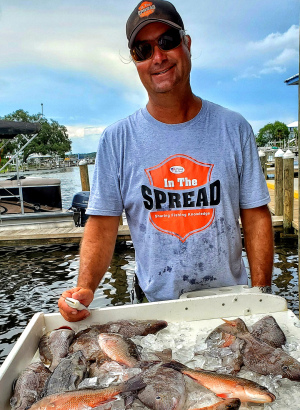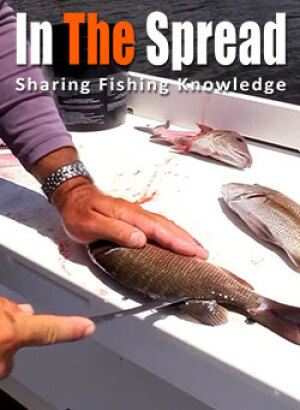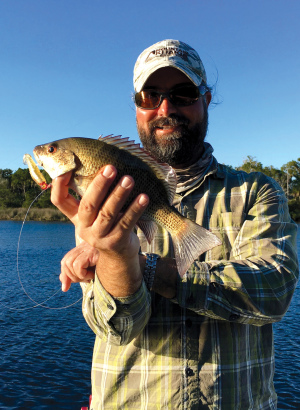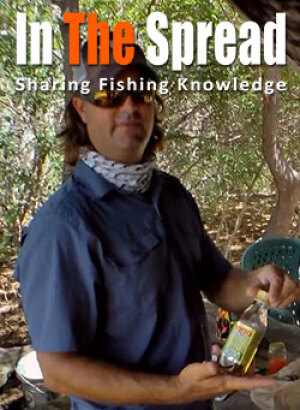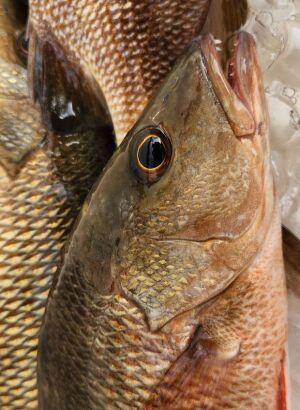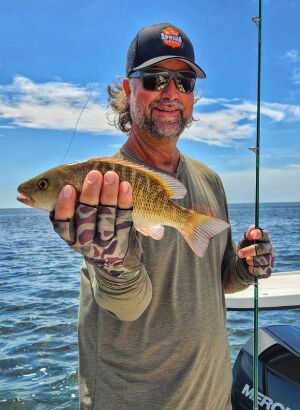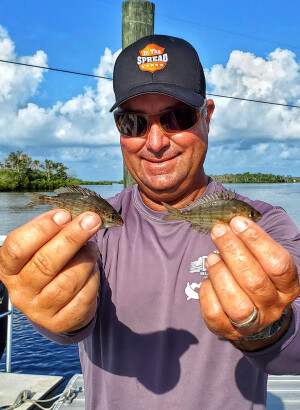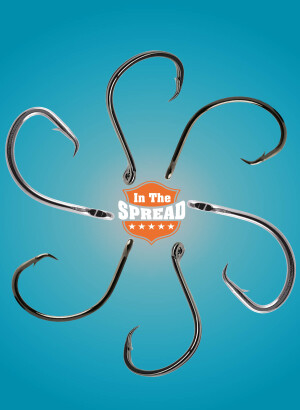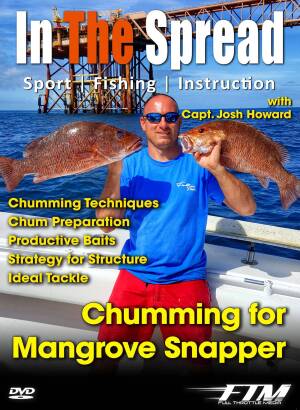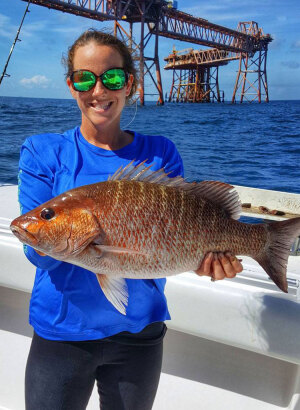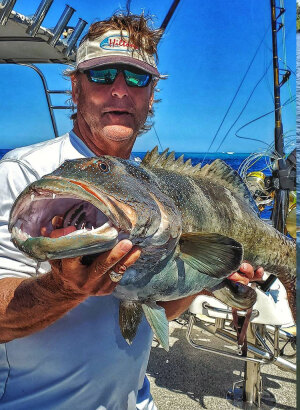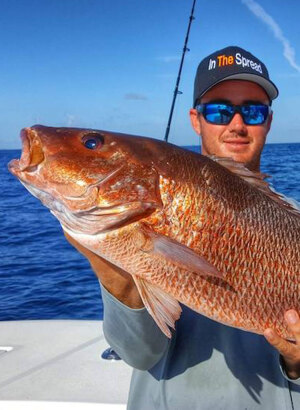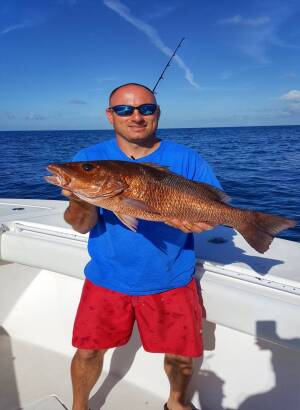Elevate your mangrove snapper fishing prowess with expert bait insights. From live shrimp to soft plastic jigs, we explore the most effective options for enticing these cunning predators. Learn how to adapt your bait choices to different seasons, locations, and fishing conditions, maximizing your chances of a successful catch.
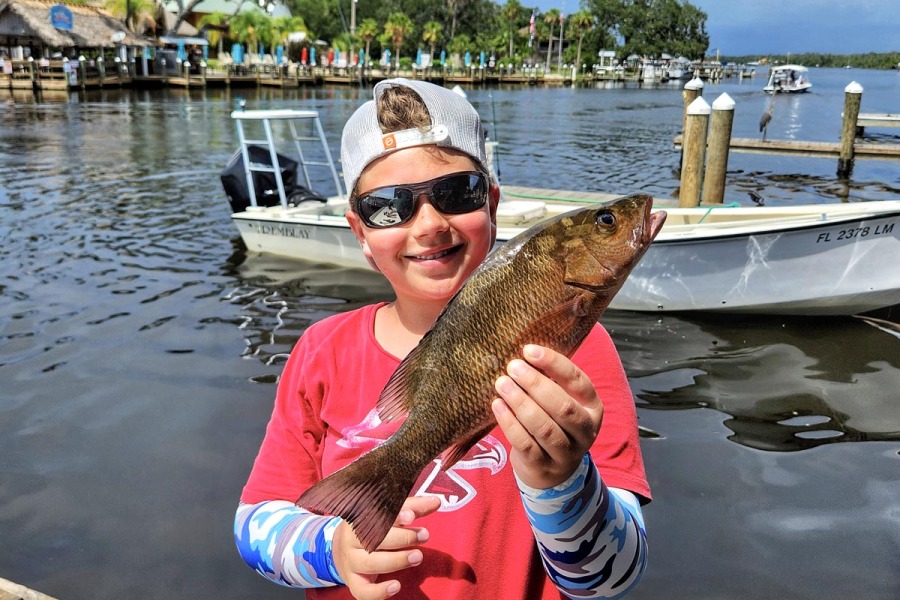
Best Bait for Mangrove Snapper
A Comprehensive Guide to Mangrove Snapper Baits:
- Shrimp: Top live bait choice
- Pinfish: Versatile live bait option
- Cut bait: Effective dead bait (e.g., mullet, sardines)
- Chumming: Enhances fishing success
- Location-specific choices: Inshore vs offshore baits
Mangrove snapper, also known as gray snapper, are prized game fish found in coastal waters throughout the southeastern United States and the Caribbean. These cunning predators are known for their delicious taste and challenging nature, making them a favorite target for both novice and experienced anglers. When it comes to successfully landing these elusive fish, choosing the right bait is crucial. In this super comprehensive guide, we'll explore the best bait for mangrove snapper, covering live bait, dead bait, to help you maximize your chances of a successful fishing trip.
Live Baits for Mangrove Snapper
Live bait reigns supreme in the world of mangrove snapper fishing, offering an irresistible combination of natural movement, scent, and taste that these savvy predators find hard to resist. The lifelike action of a struggling baitfish or crustacean in the water column triggers the snapper's instinctive feeding response, often leading to more frequent and aggressive strikes. This natural presentation is particularly effective in clear water conditions or when fishing pressured areas where snappers may have grown wary of artificial offerings.
The effectiveness of live bait stems from its ability to mimic the snapper's natural prey items perfectly. As opportunistic feeders, mangrove snappers have evolved to quickly identify and capitalize on vulnerable prey in their environment. By presenting live bait, anglers tap into this predatory instinct, increasing their chances of a successful hookup. Moreover, the scent trail produced by live bait can attract snappers from a wider area, potentially leading to multiple catches in a single spot.
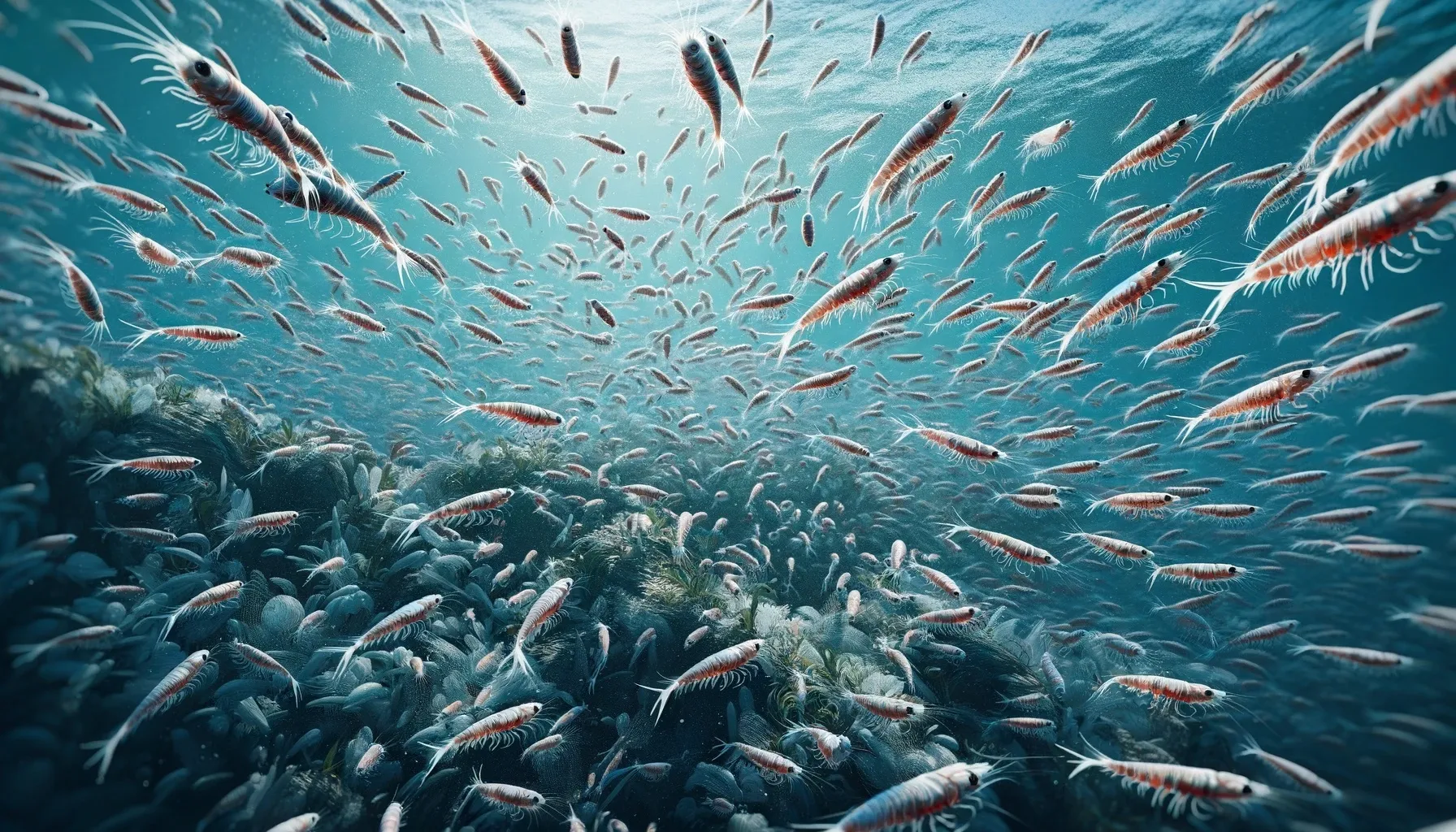
Shrimp: The Top Choice
Shrimp holds a special place in the world of mangrove snapper fishing, often hailed as the ultimate bait choice by seasoned anglers and fishing guides alike. As Capt. William Toney aptly puts it, "offering shrimp to mangrove snappers is akin to presenting them with an irresistible treat". This analogy underscores the irresistible appeal that shrimp holds for these cunning predators.
The effectiveness of shrimp as bait for mangrove snapper can be attributed to several factors. Firstly, shrimp form a significant part of the natural diet of mangrove snappers in their native habitats. This familiarity makes shrimp an instantly recognizable and enticing food source. Secondly, the movement of a live shrimp in the water mimics the erratic, darting motion that triggers a snapper's predatory instincts, often eliciting a swift and decisive strike.
When employing shrimp as bait, proper presentation is key to maximizing its effectiveness. Hooking the shrimp through the tail, rather than the head, allows for a more natural swimming action as it moves through the water. This lifelike presentation can be the difference between a cautious approach and an aggressive bite from a wary snapper.
While live shrimp are undoubtedly the top choice, fresh dead shrimp can also prove effective, especially when live bait is unavailable. The scent and taste of fresh dead shrimp can still attract snappers, though they may lack the enticing movement of their live counterparts. In situations where dead shrimp are used, anglers may need to impart additional action to the bait through subtle rod movements or drift techniques.
The use of a popping cork when fishing with shrimp can significantly enhance your chances of success. This technique allows you to suspend the shrimp at a specific depth, keeping it in the strike zone where snappers are most likely to encounter it. The intermittent "pop" created by jerking the cork also serves to attract nearby fish, simulating the sound of feeding activity and potentially drawing in curious snappers from a wider area.
Moreover, the versatility of shrimp as bait extends across various fishing scenarios. Whether you're targeting mangrove snappers in shallow inshore waters, around bridge pilings, or over deeper offshore reefs, shrimp remains a consistently effective choice. Its widespread availability in bait shops along coastal areas makes it a convenient option for both planned fishing trips and spontaneous outings.

Pinfish: A Versatile Option
Pinfish have earned their reputation as a top-tier live bait for mangrove snapper fishing, offering a compelling alternative to shrimp in many situations. These hardy, silvery baitfish are not only abundant in the same habitats where snappers thrive but also provide a substantial and nutritious meal that can attract larger specimens.
The effectiveness of pinfish as bait stems from their natural presence in the mangrove snapper's ecosystem. Snappers are accustomed to seeing and feeding on these small fish, making them a familiar and trusted food source. This familiarity often translates to more confident strikes and higher hook-up rates for anglers.
When using pinfish as bait, proper hooking technique is crucial. Hooking them through the nose allows for a more natural swimming action, enticing snappers with lifelike movement. Alternatively, hooking just behind the dorsal fin can be effective, especially when targeting larger snappers that may be more cautious. This method provides a different presentation that can trigger strikes from wary fish. If you want the bait to swim down and you don't have to reposition your boat, hook the pinfish just behind the anal fin.
Carolina Rig components:
- Sliding egg sinker (weight varies based on current and depth)
- Barrel swivel
- 12-24 inch fluorocarbon leader
- Circle hook sized appropriately for the bait
Size selection of pinfish can play a crucial role in targeting specific sizes of mangrove snapper. Smaller pinfish, typically 2-3 inches in length, are ideal for average-sized snappers and can lead to more frequent bites. However, when trophy hunting or targeting structure known to hold larger fish, upsizing to 4-5 inch pinfish can be the key to enticing a trophy-sized snapper to strike.
Tips for maintaining healthy pinfish:
- Use a high-quality aerator or recirculating pump in your bait tank
- Monitor water temperature and add ice if necessary to prevent overheating
- Avoid overcrowding the bait tank
- Change water regularly on extended fishing trips
One of the advantages of using pinfish is their durability on the hook. Unlike more delicate baits like shrimp, pinfish can withstand multiple casts and extended periods in the water without losing their effectiveness. This resilience can be particularly beneficial when fishing areas with high concentrations of bait-stealing smaller fish or when trying to wait out a trophy snapper.
Pinfish also offer versatility in presentation methods. While they're often fished on or near the bottom, they can also be effective when free-lined or fished under a float. This adaptability allows anglers to target mangrove snappers at various depths and in different structures, from shallow mangrove roots to deeper offshore reefs.
Blue Crabs: For Targeting Larger Snapper
Blue crabs represent a premium bait option for anglers targeting trophy-sized mangrove snapper. These crustaceans offer a substantial and enticing meal that can attract larger, more cautious fish that might overlook smaller baits. The use of blue crabs as bait capitalizes on the opportunistic feeding behavior of mature snappers, presenting them with a high-calorie food source that's hard to resist.
- Size and Scent: Blue crabs provide a larger profile in the water, which can be more appealing to bigger snappers. Additionally, the strong scent released by crab meat in the water creates an irresistible attraction for predatory fish.
- Natural Prey: In many habitats, blue crabs form a significant part of the diet for mature mangrove snappers. This familiarity can lead to more confident strikes from larger fish.
- Selectivity: By using a larger, more challenging bait, anglers can often bypass smaller snappers and focus on trophy-sized specimens.
When preparing blue crabs for use as bait, proper handling and presentation are crucial:
- Begin by removing the claws from the crab. This step serves two purposes: It makes the bait easier to handle and hook. It releases additional scent into the water, creating a more potent attraction
- Cut the crab into quarters. This size is typically ideal for mangrove snapper fishing, providing a substantial bait piece without being too unwieldy.
- When baiting your hook, use a single quarter of the crab. Ensure that the hook is securely embedded in the meat, allowing for a natural presentation while minimizing the chance of the bait being stolen.
Hooking technique:
- Push the hook through the shell and out through the meat
- Alternatively, remove the shell and hook directly through the meat for a softer presentation
Target specific structures and deeper water when using blue crab bait. Larger mangrove snappers often prefer:
- Offshore reefs and wrecks
- Deep bridge pilings
- Channel edges adjacent to flats or mangrove shorelines
Consider using more robust tackle when fishing with blue crab, as the larger baits may attract not only big snappers but other substantial predators as well.
Recommended gear:
- 20-30 lb fluorocarbon leader
- 3/0 to 5/0 circle hooks
- Appropriate weight to keep the bait in the strike zone
When fishing with blue crab, patience can be key. Larger snappers may take more time to commit to the bait, so allow ample time for the fish to find and take the offering. The wait is often worth it, as blue crab bait can lead to some of the largest mangrove snappers an angler might encounter.
Other Effective Live Baits
While shrimp, pinfish, and blue crabs often take center stage in mangrove snapper fishing, savvy anglers know the value of diversifying their bait options. A variety of other live baits can prove highly effective, especially when conditions or availability dictate a change in tactics. Let's explore these alternative live bait options and their potential for success.
These small, silvery fish are known for their distinctive croaking sound and are a favorite prey item for many predatory species, including mangrove snapper. Croakers offer several advantages as bait:
- Durability: They're hardy on the hook, often staying lively for extended periods.
- Size variety: Available in different sizes, allowing anglers to match the hatch or target specific snapper sizes.
- Scent attraction: Croakers emit a strong scent in the water, which can draw snappers from a distance.
Pilchards:
Also known as whitebait or sardines, pilchards are a staple in the diet of many inshore predators. Their effectiveness for mangrove snapper fishing stems from:
- Abundance: Often found in large schools, making them a familiar sight to snappers.
- Oily flesh: Releases a strong scent trail in the water, attracting fish from afar.
- Versatility: Can be used whole for larger snappers or cut into chunks for smaller fish.
Threadfin herring:
These slender, silvery baitfish are prized for their ability to attract a wide variety of game fish, including mangrove snapper. Key benefits include:
- Flash and action: Their reflective scales and erratic swimming motion can trigger strikes.
- Seasonal availability: Often abundant during warmer months, coinciding with peak snapper fishing periods.
- Effectiveness in clear water: The natural presentation can entice bites in conditions where snappers might be wary of artificial lures.
Small mullet:
While larger mullet are often used as cut bait, small live mullet can be highly effective for mangrove snapper. Consider these factors:
- Size appeal: Finger mullet (3-5 inches) are an ideal size for many snappers.
- Hardiness: They can withstand rough handling and stay lively on the hook.
- Versatility: Effective in both inshore and nearshore environments.
Mud minnows:
These small, hardy baitfish are often overlooked but can be deadly effective for mangrove snapper, especially in estuarine environments. Advantages include:
- Availability: Often easy to catch or purchase when other baits are scarce.
- Toughness: Can survive in less-than-ideal conditions, making them a reliable bait choice.
- Natural prey: Commonly found in the same habitats as juvenile snappers, making them a familiar food source.
When experimenting with these alternative baits, consider the following tips:
- Match the prevalent forage in your fishing area. Observe what baitfish are naturally present and try to mimic these offerings.
- Adjust your hook size and rigging to suit the bait. Smaller baits like mud minnows may require smaller hooks, while larger offerings like mullet might need stronger hooks and leaders.
- Vary your presentation techniques. Some baits may work better when free-lined, while others might be more effective when fished on the bottom or under a float.
- Pay attention to seasonal patterns. Certain baitfish may be more prevalent or effective during specific times of the year.
- Don't be afraid to switch baits frequently if you're not getting bites. Mangrove snappers can be finicky, and sometimes a change in offering is all it takes to trigger a feeding response.
By expanding your live bait repertoire and being willing to experiment with these alternatives, you can adapt to changing conditions and potentially unlock new levels of success in your mangrove snapper fishing endeavors. Remember, the most effective bait on any given day may vary, so versatility and willingness to try different options can be key to consistent success.
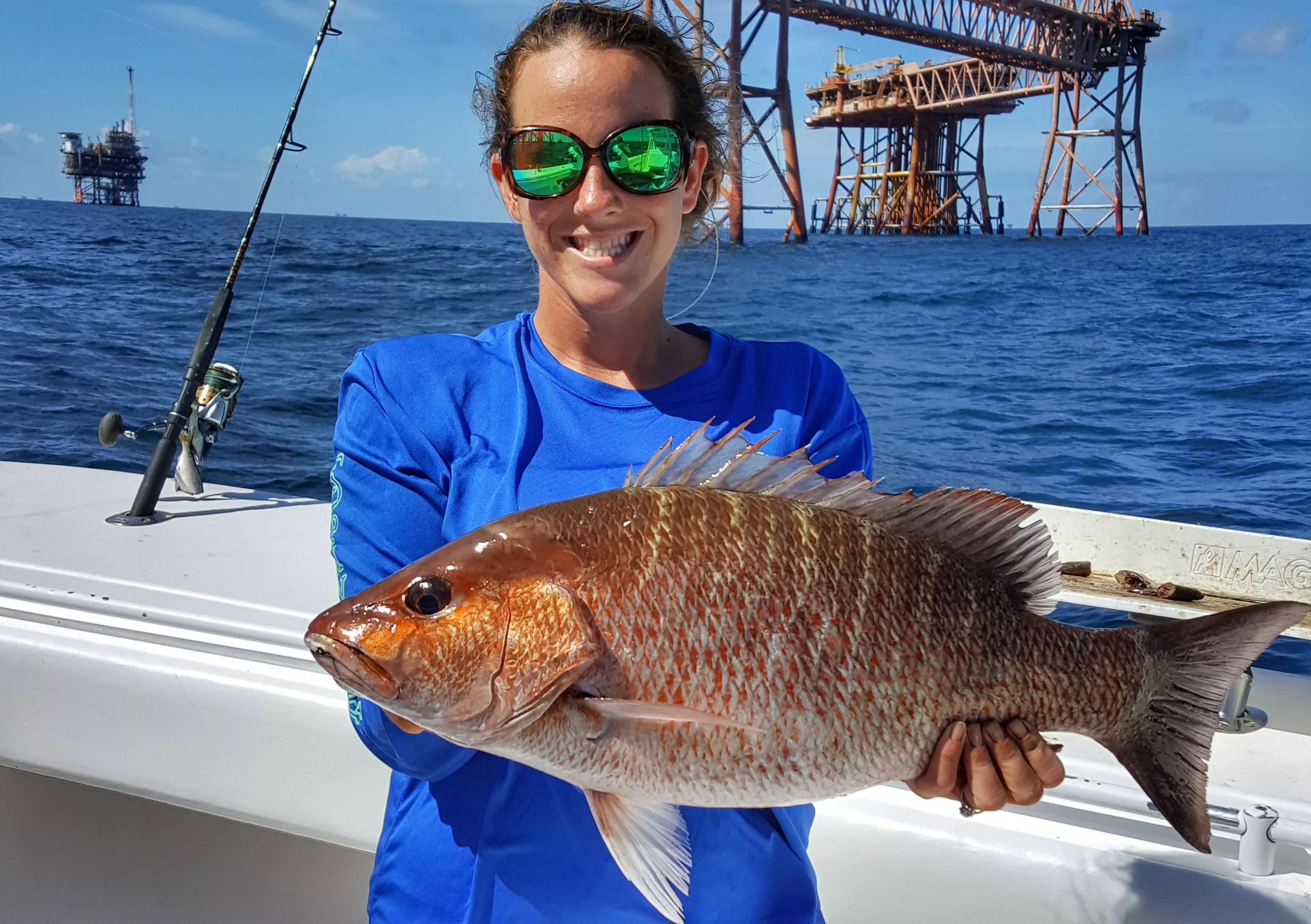
Dead Baits for Mangrove Snapper
While live bait often takes the spotlight in mangrove snapper fishing, the effectiveness of dead bait, particularly cut bait, should not be underestimated. In fact, dead bait can sometimes outperform live offerings, especially in certain fishing scenarios or when targeting larger specimens. This versatility makes cut bait a valuable tool in any snapper angler's arsenal.
- Scent dispersion: When cut, the flesh of baitfish releases oils and amino acids into the water, creating a potent scent trail that can attract snappers from a considerable distance. This scent cloud can be particularly effective in murky water or when fishing deeper structures where visual cues are limited.
- Ease of use: Unlike live bait, which requires careful handling and storage to maintain its liveliness, cut bait is much easier to manage. It can be frozen for long-term storage and thawed as needed, making it a convenient option for spontaneous fishing trips or when live bait is scarce.
- Durability: Cut bait tends to stay on the hook better than some live baits, especially in areas with strong currents or when dealing with bait-stealing smaller fish. This increased durability can mean more time with your bait in the strike zone.
- Selective targeting: By using larger chunks of cut bait, anglers can often bypass smaller fish and target larger, more mature mangrove snappers. This selectivity can be particularly useful when trophy hunting or when smaller fish are abundantly present and interfering with your target species.
- Versatility in presentation: Cut bait can be presented in various ways – on the bottom, under a float, or even drifted in the current. This flexibility allows anglers to adapt to different fishing conditions and snapper behaviors.
- Cost-effectiveness: In many cases, cut bait can be more economical than purchasing or catching live bait, especially when considering the potential for waste if live bait dies before use.
- Chumming potential: Excess pieces of cut bait can be used as chum to attract snappers to your fishing area, creating a feeding frenzy that can lead to more aggressive bites.
While the effectiveness of cut bait is clear, it's important to note that freshness remains a key factor. The fresher the cut bait, the more appealing it will be to mangrove snappers. Anglers should strive to use the freshest possible bait, whether it's newly caught and cut on the spot or properly frozen and thawed bait from a previous trip.
Live bait certainly has its place in mangrove snapper fishing, just keep in mind that the strategic use of cut bait can often lead to equally impressive, if not superior, results. By understanding the advantages of cut bait and knowing when and how to employ it effectively, anglers can significantly expand their tactical options and increase their chances of success on the water.
Cut Bait Options
When it comes to selecting the best cut bait for mangrove snapper, anglers have several effective options at their disposal. Each of these bait choices offers unique characteristics that can entice snappers under various conditions.
Poagies (Menhaden):
Poagies, also known as menhaden, are oily fish that create a potent scent trail in the water. Their high oil content makes them particularly attractive to predatory fish like mangrove snappers. When using poagies as cut bait:- Cut them into small strips or chunks, depending on the size of snappers you're targeting.
- The oily nature of poagies allows them to disperse scent even in strong currents.
- They're especially effective when fishing deeper waters or areas with reduced visibility.
Bonito:
Bonito, a member of the tuna family, is another excellent choice for cut bait. Its firm, meaty texture and strong fish smell make it appealing to snappers. Consider these points when using bonito:
- Its durability on the hook makes it ideal for areas with strong currents or abundant bait-stealing fish.
- Cut bonito into small cubes or strips, ensuring each piece has some skin attached for added toughness.
- The dark, blood-rich meat of bonito can be particularly effective in clear water conditions.
Mullet:
Mullet is a versatile bait option that's often readily available in coastal areas where mangrove snappers are found. Its effectiveness stems from:
- Being a natural prey item for snappers in many habitats.
- The ability to cut it into various sizes to match different snapper preferences.
- A good balance of toughness and scent dispersion in the water.
Sardines:
Sardines are small, oily fish that can be highly effective as cut bait for mangrove snappers. Their advantages include:
- Strong scent dispersion due to their oily nature.
- Soft texture that allows for easy hook penetration when a snapper strikes.
- Versatility in presentation – can be used whole for larger snappers or cut into smaller pieces.
When employing these cut baits, consider the following expanded tips to maximize your success:
- Size your cut bait according to the size of the mangrove snapper you're targeting: For smaller snappers (under 12 inches), use bait pieces about the size of a thumbnail. For larger specimens, increase bait size up to 1-2 inches in length. Observe how snappers are hitting your bait – if they're shy, try reducing the size.
- If you're chumming, use the same type of bait as your chum for consistency: This creates a more natural feeding scenario for the snappers. Mangrove snapper are savvy and notice even subtle variations. Cut your hook bait about the same size as your chum offering. Consider using a chum bag or cage to disperse the scent gradually.
- Ensure your bait is fresh for the best scent trail and attractiveness: Freshly caught and cut bait is always optimal. If using frozen bait, ensure it's properly thawed and still retains its natural oils. Replace bait frequently, especially in warm water conditions where it can deteriorate quickly.
- Experiment with different cuts and presentations: Try strips, chunks, or butterfly cuts to see what the snappers prefer on any given day. Some anglers find success by leaving the skin on one side of the cut bait for added durability.
- Consider the water conditions: In clear water, use smaller, more natural-looking cut bait pieces. In murky water or strong currents, larger, more scent-producing cuts can be more effective.
- Rig your cut bait properly: Use circle hooks for better hook-up rates and to reduce gut-hooking. Ensure the hook point is exposed for better penetration on the strike. Consider using fluorocarbon leaders in clear water conditions for reduced visibility.
- Pay attention to tide and current: In stronger currents, use slightly larger bait pieces that will hold up better. During slack tides, smaller, more delicate pieces can be more enticing.
By carefully selecting your cut bait and employing these techniques, you can significantly increase your chances of success when targeting mangrove snappers. Remember that conditions can change, so always be prepared to adjust your bait and tactics accordingly.
Advantages of Using Dead Bait
The advantages of using dead bait for mangrove snapper fishing extend beyond mere convenience, offering anglers strategic benefits that can significantly enhance their fishing success. Let's delve deeper into these benefits:
Ease of Storage and Transport:
Dead bait's superior storage capabilities make it a practical choice for many fishing scenarios. Unlike live bait, which requires constant attention and specialized equipment to keep alive, dead bait can be:
- Frozen for long-term storage, allowing anglers to stock up when bait is abundant or on sale.
- Packed in coolers or ice chests without the need for aeration or water changes.
- Transported over long distances without worry of mortality.
This convenience is particularly valuable for anglers planning extended fishing trips or those who may not have immediate access to live bait sources.
The ability to cut dead bait to precise sizes offers anglers unparalleled control over their presentations. This customization allows for:
- Matching the exact size of local forage fish that snappers are targeting.
- Adjusting bait size based on the size of snappers in the area.
- Creating strip baits or chunk baits that mimic injured prey, triggering predatory instincts.
Moreover, this size flexibility enables anglers to quickly adapt to changing conditions or fish preferences throughout the day, a level of versatility not always possible with live bait.
The increased durability of dead bait on the hook translates to more efficient fishing time. Benefits include:
- Reduced frequency of bait checks and replacements, keeping your offering in the strike zone longer.
- Better performance in strong currents or areas with abundant bait-stealing smaller fish.
- Improved casting distance and accuracy, as dead bait is less likely to fly off the hook during the cast.
This durability is particularly advantageous when fishing structure or in situations where frequent recasting might spook wary snappers.
Effective Chumming Companion:
Dead bait excels as a component in chumming strategies, offering several advantages:- Consistency between chum and hook bait, creating a more natural feeding scenario.
- Ability to create a targeted chum slick using the same type of bait you're fishing with.
- Option to use less desirable parts of the bait (like fish heads or tails) as chum while reserving prime cuts for hook bait.
Effective chumming can concentrate snappers in your fishing area, potentially leading to more aggressive feeding behavior and increased catch rates.
Additional Considerations:
- Scent Dispersion: Cut dead bait often releases a stronger scent trail than live bait, attracting snappers from a greater distance.
- Cost-Effectiveness: Dead bait can be more economical, especially when purchased in bulk or when using fish caught and frozen from previous trips.
- Versatility in Presentation: Dead bait can be rigged in various ways (on jig heads, weighted hooks, or in combination with artificial lures) to suit different fishing conditions.
While dead bait offers these significant advantages, it's important to note that the most successful anglers often carry both live and dead bait options. This allows for adaptation to changing conditions and fish preferences throughout the day. By understanding and leveraging the unique benefits of dead bait, anglers can expand their tactical arsenal and improve their chances of success when targeting the wily mangrove snapper.

Tips for Preparing and Presenting Dead Bait
To maximize the effectiveness of dead bait when targeting mangrove snapper, proper preparation and presentation are crucial. Start by cutting the bait into appropriately sized strips or chunks that match the size of your target fish. This not only makes the bait more manageable for the snapper but also mimics their natural prey more closely. For average-sized snappers, aim for bait pieces about 1-2 inches long. If you're targeting larger specimens, you can increase the size accordingly.
Using sharp hooks is essential for ensuring good penetration when a snapper strikes. Mangrove snappers are known for their quick, subtle bites, and a sharp hook can make the difference between a successful hookup and a missed opportunity. Regularly inspect and replace your hooks as needed, and consider using a hook sharpener to maintain their effectiveness throughout your fishing trip.
Circle hooks have gained popularity among snapper anglers for good reason. They tend to increase hook-up ratios by naturally setting in the corner of the fish's mouth as it swims away with the bait. This not only improves catch rates but also significantly reduces the likelihood of gut-hooking, which is crucial for the survival of released fish. When using circle hooks, resist the urge to set the hook aggressively; instead, apply steady pressure when you feel a bite.
- Floating the bait under a cork: This method keeps your bait suspended at a specific depth and can be particularly effective in areas with structure or when fishing over grass flats.
- Bottom fishing: Allowing your bait to rest on the bottom can be highly effective, especially when fishing deeper waters or around structure where snappers often congregate.
- Free-lining: This technique involves presenting the bait without any weight, allowing it to sink naturally in the water column. It can be very effective in shallow waters or when fishing around mangroves.
Remember to adjust your presentation based on the current, water depth, and observed snapper behavior. Pay attention to subtle differences in how the fish respond to different presentations and be willing to adapt your approach throughout the day. By fine-tuning these aspects of your dead bait fishing technique, you can significantly increase your chances of success when targeting mangrove snapper.
Chumming Techniques for Mangrove Snapper
Chumming is a powerful technique that can dramatically enhance your mangrove snapper fishing success. By strategically dispersing small pieces of bait or scent attractants in the water, you create an irresistible feeding zone that draws snappers from the surrounding area. This method not only concentrates fish in your vicinity but also stimulates their feeding instincts, making them more likely to strike your baited hook.
The effectiveness of chumming lies in its ability to mimic natural feeding scenarios. As the chum disperses in the water, it creates a scent trail that snappers can detect from considerable distances. This trail acts as a highway, guiding fish directly to your fishing spot. Moreover, the presence of multiple food particles in the water can trigger a competitive feeding response among snappers, potentially leading to more aggressive bites.
- Ground or cut-up baitfish (menhaden, sardines, or mullet)
- Macaroni boiled in crab boil mix
- Commercial chum blocks or frozen chum logs
- Fish oils or specially formulated scent attractants
The key to successful chumming is consistency and moderation. Start your chum line before you begin fishing to give time for the scent to spread and attract fish. Maintain a steady stream of chum throughout your fishing session, but avoid oversaturating the area, which can lead to fish becoming too well-fed to strike your hook.
Proper chum placement is crucial. Position your chum source upstream or upcurrent from your fishing spot, allowing the current to carry the scent and particles towards your baited hooks. This creates a natural progression for the fish to follow, increasing the likelihood they'll encounter your bait.
Remember that the type of chum you use should match or complement your hook bait. If you're fishing with cut mullet, for example, including some cut mullet in your chum can create a more cohesive and natural feeding scenario. This consistency can make snappers less wary and more likely to take your bait.
Benefits of Chumming
Chumming provides numerous advantages when targeting mangrove snapper, enhancing your fishing experience and potentially increasing your catch rate. Here's an expanded look at these benefits:
- Attracts fish from a wider area: Creates a scent trail that can reach snappers beyond your immediate fishing spot. Draws in fish from structure or hiding spots that might otherwise be out of range. Can attract larger, more cautious snappers that typically stay in deeper waters
- Stimulates feeding behavior: Mimics natural feeding frenzies, triggering predatory instincts. Increases competition among fish, leading to more aggressive bites. Can overcome periods of slow feeding activity
- Keeps fish in your fishing zone for longer periods: Establishes a consistent food source, encouraging snappers to stick around. Allows for multiple catch opportunities without having to change spots. Creates a "feeding station" effect, where snappers learn to return for easy meals
- Can make wary fish more likely to strike your bait: Desensitizes cautious snappers to the presence of bait in the water. Masks any unnatural aspects of your presentation amidst the chum. Encourages snappers to feed more freely, reducing their scrutiny of individual baits
- Enhances the effectiveness of your chosen bait: Complements your hook bait, making it appear as part of a natural food source. Can make artificial lures more enticing when used in conjunction with chum
- Allows for targeted fishing: By using species-specific chum, you can attract more of your target species. Helps concentrate snappers in a specific area, improving your casting efficiency
Remember, while chumming can significantly improve your chances of success, it's important to use this technique responsibly and in accordance with local fishing regulations.
How to Effectively Chum for Mangrove Snapper
To maximize the effectiveness of your chumming efforts when targeting mangrove snapper, timing and technique are crucial. Begin your chumming process well before you start fishing, allowing ample time for the scent to disperse and attract snappers from the surrounding area. This pre-fishing chum period can significantly increase your chances of success by establishing a feeding zone before you even cast your line.
Utilizing a chum bag or bucket with small holes is an effective method for controlled chum dispersion. This approach ensures a steady, slow release of chum particles and scent, creating a consistent attraction without overwhelming the area. The gradual release also helps maintain the snappers' interest over an extended period, rather than creating a short-lived feeding frenzy.
Proper positioning of your chum source is essential for optimal results. Place your chum bag or dispenser upstream or upcurrent from your fishing spot. This strategic placement allows the current to carry the chum particles and scent directly towards your baited hooks, creating a natural path for the snappers to follow. As they move up the scent trail, they'll encounter your bait, increasing the likelihood of strikes.
Seasonal Bait Preferences
Mangrove snapper exhibit distinct seasonal feeding patterns that savvy anglers can leverage to improve their success rates. Understanding and adapting to these patterns is crucial for consistent catches throughout the year.
In spring and summer, as water temperatures rise, mangrove snappers become more active and aggressive in their feeding habits. During these warmer months, they tend to prefer live, fast-moving baits that mimic the abundant prey in their environment. Live shrimp are particularly effective, as they're a natural and readily available food source. Small baitfish like pinfish and pilchards also prove highly attractive, mimicking the juvenile fish that snappers often target. For artificial lure enthusiasts, soft plastic jigs in bright colors can be deadly effective, especially when worked with erratic, life-like movements.
As fall approaches and temperatures begin to cool, mangrove snappers often shift their feeding strategies. They may become less aggressive and more opportunistic, leading to a preference for cut bait options. Mullet and sardines, cut into appropriate sizes, can be irresistible during this period. Larger live baits can also be effective for targeting bigger snappers that are bulking up for winter. When using artificial lures in cooler months, opt for slower-moving presentations that give the less active snappers more time to strike.
Adapting to these seasonal patterns requires attention to several key factors. Water temperature is perhaps the most critical, as it directly influences snapper activity levels and metabolism. Bait migrations also play a significant role; snappers often key in on specific bait species as they move through an area. Additionally, being aware of snapper spawning periods can help you anticipate changes in feeding behavior.
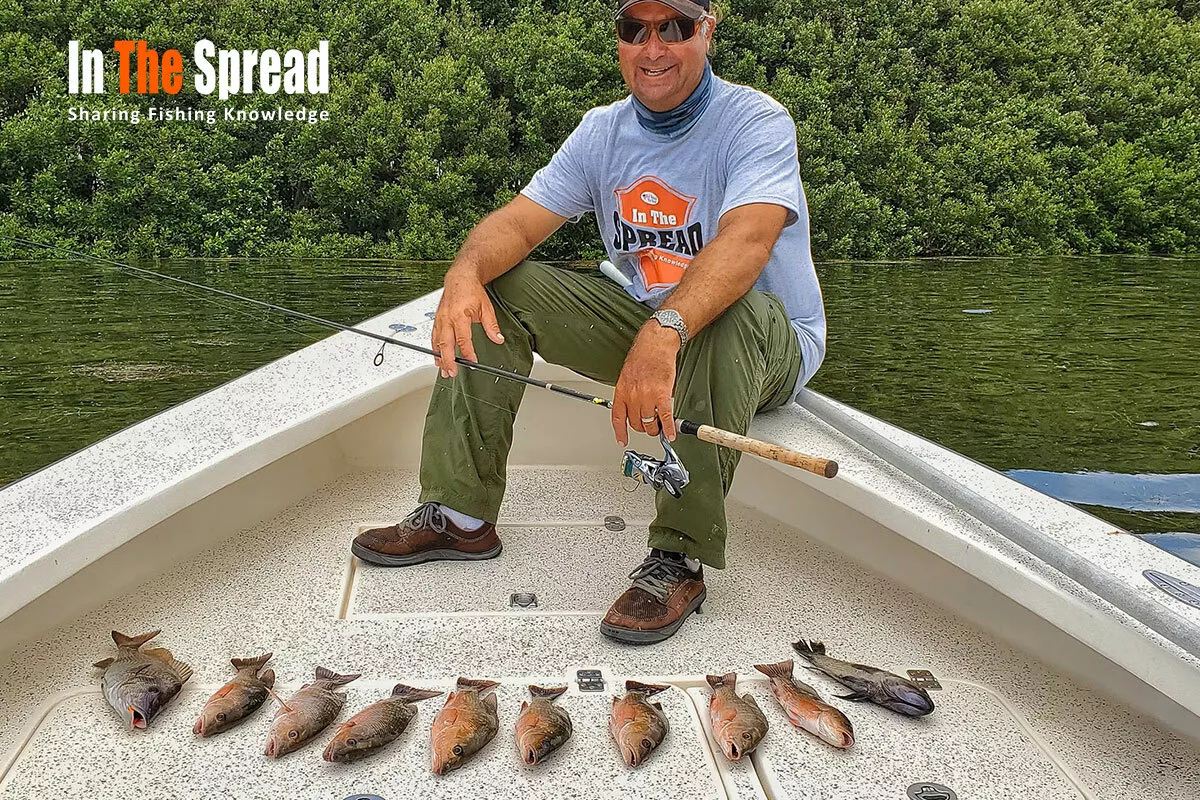
Bait Selection Based on Fishing Location
The choice of bait for mangrove snapper can significantly differ based on the fishing location, as these adaptable fish adjust their feeding habits to their environment. In inshore areas such as mangroves, docks, and bridges, snappers tend to prefer smaller, more nimble prey that can navigate these complex structures. Live shrimp are particularly effective in these scenarios, as they naturally inhabit these areas and are a staple in the snapper's diet. Small pinfish also work well, mimicking the juvenile fish that snappers often hunt around inshore structures.
When venturing offshore to fish over reefs or wrecks, the bait selection often shifts to accommodate the different feeding patterns of larger, more mature snappers. In these deeper waters, larger live baits like blue runners or small mullet can be highly effective. These bigger baits not only attract larger snappers but also stand out in the often more turbulent offshore conditions.
Cut bait becomes increasingly valuable in offshore scenarios. Options like bonito or sardines, cut into appropriate chunks, can create a potent scent trail in deeper waters, attracting snappers from a distance. The stronger currents often found offshore can help disperse this scent more effectively.
- Water clarity: In clearer inshore waters, more natural presentations may be necessary, while offshore's often murkier conditions might allow for larger, more visible baits.
- Depth: Deeper offshore waters may require heavier, more substantial baits to reach the bottom where snappers often feed.
- Local forage: Try to match your bait to the predominant prey species in each location for best results.
By tailoring your bait selection to the specific characteristics of inshore or offshore environments, you can significantly increase your chances of success when targeting mangrove snapper in various locations.
Smarter Snapper Fishing Starts with Knowledge
Success in mangrove snapper fishing is deeply rooted in understanding these intelligent and adaptable fish. Their behavior can vary significantly based on factors such as habitat, time of day, season, and local conditions. By immersing yourself in the pursuit of mangrove snapper and continually experimenting with different baits, techniques, and approaches, you'll develop an intuitive sense of what works best in various scenarios.
This knowledge acquisition is an ongoing process. What works one day might not be as effective the next, so maintaining a flexible and observant approach is key. Pay attention to subtle cues like water temperature, clarity, tidal movements, and the presence of bait schools. These factors can all influence snapper behavior and, consequently, your fishing strategy.
While the thrill of the catch is a primary motivation for many anglers, it's crucial to approach mangrove snapper fishing with a mindset of conservation and sustainability. Following local regulations and size limits is not just a legal obligation but a vital part of ensuring healthy snapper populations for future generations. When regulations allow, practicing catch and release can be an excellent way to enjoy the sport while minimizing impact on fish stocks.
By combining your growing knowledge of mangrove snapper behavior with responsible fishing practices, you set the stage for rewarding and sustainable fishing experiences. The satisfaction of successfully reading the conditions, choosing the right bait and presentation, and landing a prized mangrove snapper becomes even greater when done with respect for the resource. This approach not only enhances your personal fishing skills but also contributes to the long-term health of snapper populations and the ecosystems they inhabit.
Seth Horne
In The Spread, Chief Creator
Login
to leave a review.
User Reviews
There are no reviews yet.Complete Dredge Pulley Setup Guide
Saltwater
12.28.2020
High Speed Wahoo Trolling Rig
Saltwater
09.07.2018
Best Bait for Wahoo
Saltwater
12.30.2023
Pinfish - A Comprehensive Guide
Saltwater
11.10.2023
0

